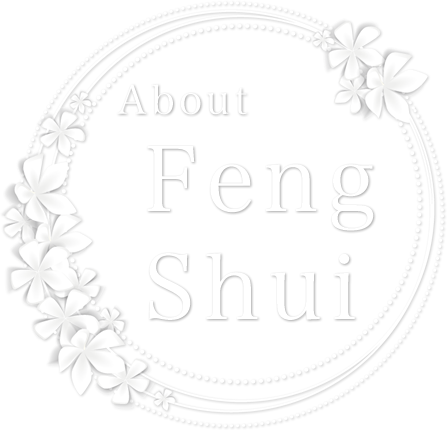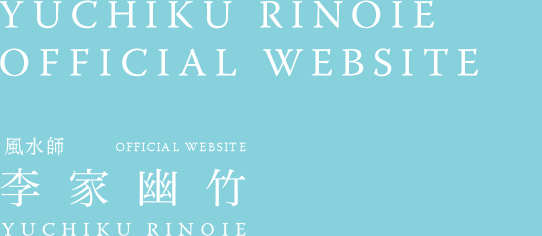What Is Feng Shui?
Feng Shui first came about 4,000 years ago in China as an environmental study utilizing the power of “chi” (life force).
It might sound complicated, but Feng Shui is really about using your surroundings–your clothes, diet, home, etc–to bring you greater fortune.
“Your surroundings determine your fortune.” This is the basic philosophy behind Feng Shui.
Unfortunately, the fortune we are born with is something we can’t control. But what if I told you there was a way to greatly increase that fortune?
Feng Shui shows us how; you could even say Feng Shui is a manual, one that shows us how to achieve greater fortune using our surroundings, which have a major influence on ourselves.
Those who believe they have bad fortune should first take a look around at their surroundings.
I am confident they will find the cause of their misfortune. By using Feng Shui to remove the source(s) of misfortune and bring about better fortune, anyone can become a “lucky” person.
What is Joseon Feng Shui?
Feng Shui originated from China, and from there spread throughout Asia. It was originally developed as a military strategy, and was used to find good land on which to build tombs, houses, and large cities. Brought to Japan in about 602 AD, it was even used in building cities such as ancient Kyoto.
In Korea, which had been heavily influenced by China and had always believed in the sacredness of mountains, Feng Shui was used and developed by the government as a national discipline. Due to its smaller geographic area, Korea’s Feng Shui differed from China in that it emphasized tempering one’s fortune out of the immediate area. Practical, every-day Feng Shui became systemized particularly during the Joseon Dynasty, when Confucianism blossomed in the country. For that reason, Feng Shui focusing on “using everything from your every-day life to forge your fortune” is called “Joseon Feng Shui.”
Yin-Yang and Wu Xing
The basis of Feng Shui comes from Yin-Yang and Wu Xing (also called the Five Elements).
This philosophy states that all things in nature are divided into Wood, Fire, Earth, Metal, and Water, and all things have properties of either Yin or Yang.
Wooden objects constitute “Wood,” plastic and synthetic goods are “Fire,” pottery and ceramics are “Earth,” metals and minerals are “Metal,” and glass objects in dark places are “Water” (those found in light places are “Fire”). These elements apply not only to objects, but to people as well; women are considered “Water” while men are “Fire.”
Yin and Yang are characteristics, opposites such as light and dark, new and old, female (Yin) and male (Yang), which co-exist in support of one another.
Without Yin, Yang cannot be; likewise, without Yang, Yin cannot exist.
The philosophy behind Yin-Yang is in this balance, which holds all things together.

The Interactions of Wu Xing
Wu Xing (Wood, Fire, Earth, Metal, Water) have relationships of “creation” between them, vitalizing one another and strengthening each other’s fortune.
For example, because Metal comes from within the Earth, their relationship has a generative force and is thus called a “creative relationship.”
On the other hand, a relationship like Water and Fire is “destructive,” standing opposite one another and lowering their fortunes. Water puts out fire, taking away Fire’s force and leaving no creative energy between them. Hence, it is a “destructive” relationship.
Nurturing relationships of creation while avoiding those of destruction is the foundation of practicing Feng Shui.

Directional Fortune
In Feng Shui, Wu Xing also applies to directions, giving them each their own fortunes. Knowing this can help you take advantage of each direction’s fortune and compatible colors.

![[image]North [image]North](/shr/img/about/icon_02.gif)
- North
- Love / Money / Trust / Secret Keeping / Sex
![[image]Northeast [image]Northeast](/shr/img/about/icon_05.gif)
- Northeast
- Change / Rebirth / Inheritance / Reset / Savings / Real Estate
![[image]East [image]East](/shr/img/about/icon_03.gif)
- East
- Development / Work / Youth / Action / Chance
![[image]Southeast [image]Southeast](/shr/img/about/icon_03.gif)
- Southeast
- Social Encounters / Romance / Personal Relationships / Socializing / Travel
![[image]South [image]South](/shr/img/about/icon_01.gif)
- South
- Popularity / Beauty / Diet / Knowledge & Intuition / Entertainment / Separation
![[image]Southwest [image]Southwest](/shr/img/about/icon_05.gif)
- Southwest
- Foundation-Creating Ability / Real Estate / Marriage / Children / Family / Health
![[image]West [image]West](/shr/img/about/icon_04.gif)
- West
- Romance / Money / Business / Pleasure / Food / Wealth
![[image]Northwest [image]Northwest](/shr/img/about/icon_04.gif)
- Northwest
- Status / Eminence / Career / Jewel-Encrused Palanquin / Support / Divine Help
![[image]Middle [image]Middle](/shr/img/about/icon_05.gif)
- Middle
- Composite Growth
History of Feng Shui
◇The origin of feng shui
The history of feng shui, which began some five thousand years ago, is believed to have started when the Yellow Emperor, a legendary figure in the Chinese mythology, united China after receiving the Divine Book (the Feng Shui Book) containing “ji meng dun jia ” (奇门遁甲).
The oldest feng shui scripture is said to be “Qing Wu Jing” (青乌经) written by Qing Wu Zi (青乌子) . However, there is a reference to checking topology through “house divination” in the Book of Documents (尚书), which is the oldest book on Chinese history, indicating that the idea of feng shui existed as early as 700 BC.
From the Book of Han (汉书), it is known that feng shui developed significantly during the Former Han dynasty, approximately. The Book says that various feng shui manuals such as “Gong Zhai Di Xing” (宫宅地形) and “Kan Yu Jin Kui” (堪舆金匮) were written during that time .
It was around the 4th century that feng shui got its current name; previously it had been called “geography,” “topology,” or “house divination.” During the Jin dynasty, Guo Pu (郭璞) (276 – 324) wrote in “the Book of Burial” (Zang Shu,葬书) that “Qi comes with wind and dissipates. If it meets water, it stops.” Following this description, the term “feng shui”, which literally means wind and water, became the commonly used name. The “Zang Shu” (葬书) (also known as “Jin Nang Jing (锦囊经)”) has been regarded as the canon of all feng shui manuals and has been used as the book to turn to by many feng shui experts even to this day.
◇The history of feng shui development
There are two main streams in feng shui development.
One is the Jiang Xi school, which developed in Jiang Xi Province in Southeastern China. This school emphasized analyzing topological features such as mountains, water, sand, and holes. As their stress was on the shape of the environment, this was also called the “Form School.” Since practitioners placed importance on geographical forms such as the shape of mountains, it was not that easy for ordinary people to put this style of feng shui into practice.
Another stream is the Fukien School, which developed in Fukien Province in Southeastern China. One characteristic of this school was that, besides analyzing the form of the environment, they also emphasized the relationship between astrology and geology. The Fukien School used a compass called luopan (罗盘), which even the feng shui experts of today use for fortune-telling, along with the five elements (Wu Xing), astrology and divination, the ten calendar signs, and the twelve horary signs.
As this school tried to read topographical features based on intelligent analysis of qi flow, it is also called the “li qi school” (理气派). One merit of the li qi school method is that one can make judgments based on universal principles, regardless of changes with time or society, as everything is attributed to one of the five elements.
The application of feng shui in the present time is primarily based on the “li qi school” method.
◇Feng shui in history
Feng shui thus established its position as the study of highly sophisticated environmental engineering. Castles and capital cities were constructed and cemeteries were planned under the guidance of feng shui. Throughout the history of China, prosperous cities were built based on feng shui. One such city is Chang An, which was said to be a city to which all roads lead. Another is Beijing, a city that has been thriving from the Ming dynasty through the Ching dynasty to the present day.
Feng shui was also used in the art of warfare to determine tactics and other details. Prominent generals such as Zhu Ge Kong Ming (诸葛孔明), a well-known figure from the Romance of the Three Kingdoms (三国志), practiced the art of warfare using feng shui.
◇History of feng shui in Japan
Feng shui first appeared in Japan around 602 AD during the reign of Emperor Suiko. It was brought by Guanle (观勒), a Korean monk from the Baekje Kingdom who is said to have introduced the lunar calendar to Japan. He not only brought his understanding of calendars, but also numerous books on feng shui to introduce the art to Japan.
A person named Soga, who had strong connections with various visitors from oversea, invited Guanle to Japan. Through Soga, feng shui was introduced to Prince Shotoku, one of the most prominent individuals in the history of Japan. From there, feng shui influenced the decision to move the capital from Nara to Kyoto.
Feng shui, which had been flourishing in Japan, faded after Ieyasu Tokugawa came to power and started the Edo shogunate. Tokugawa was a general who came into power with the aid of Tenkai the monk, who was well-versed in feng shui. He then banned feng shui so that nobody would be able to use it to overthrow his power. The ban left feng shui buried in darkness until a recent revival.



